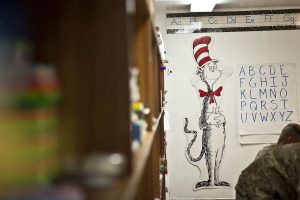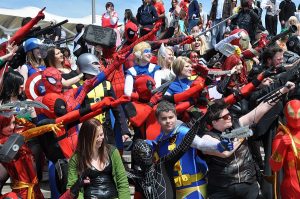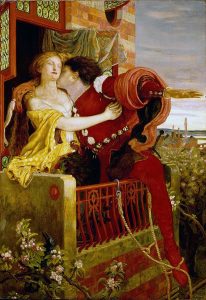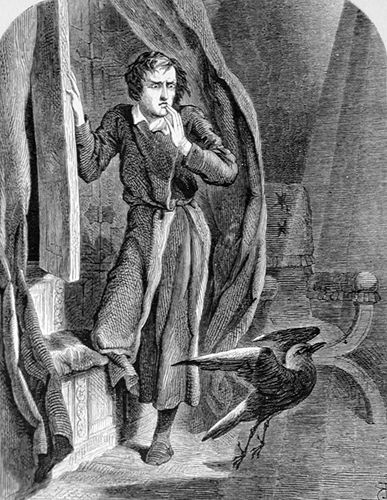Entertainment has a way of attracting audiences not only through its captivating visuals or soothing audio, but as much so with its use of words. Words used as a tool to captivate and appeal to audiences. A tool many creatives have learned to master and apply to their works, like Dr. Seuss, Stan Lee, or Shakespeare. These Individuals wordsmithing by the use of intentionally applying literary techniques, such as rhyming and alliteration. These two poetic devices are used as secret weapons to appeal to audiences, weapons I will also use to appeal to the readers of this article as well.
Beginning with dissecting rhyme, meaning words that similarly phonetically align. [1]. There are often rules to rhyme, but certainly not all the time. Ends of lines usually tend to rhyme, while internal words can also rhyme in verse. Rhymes can be perfect rhymes or slant rhymes, like in “ends” and “tend”, and “words” and “verse” in the previous line. Rhymes can even be multiple syllable that offer functional additional (creative writing). Breaking a rhyme can also be dangerous, but dividing a rhyme can serve a main purpose. Purpose such as providing examples of all techniques I’ve said, to show how rhyme schemes can be read.
Highlighting the rhymes of just the previous section, gives us a visual for readers to create connections upon reflection. With the connection to rhyme schemes used throughout the segment, rhyme schemes that can now easily be dissected with intent. Usual Rhyme schemes such as AABB, where the end of the lines rhyme with the previous one can be seen; represented in yellow then green. Also present is the rhyme scheme ABAB, represented in purple then orange, then purple then orange; for this scheme. With a general knowledge of techniques and schemes, we can begin to explore why rhyming things are appealing.

In our youth we find we become attached to word rhymes, it’s no coincidence we find it in our children’s books all of the time. My earliest memory of reading in rhyme, comes from Dr. Seuss books I read from morning to bedtime, “I know it is wet and the sun is not sunny. But we can have lots of good fun that is funny!”. Rhyming in children’s books and nursery rhymes, appeal to children who are just learning to read or write. Repetition is the key to make learning more fun and reinforces learning their best, such as word memorization, anticipation, and phonological awareness. [2]. Memorization comes easy when working in repetition, learning something over and over is a huge beneficial way to strengthen cognition. We experience this when studying or memorizing song lyrics, as children do when reading “Bartholomew and the Oobleck”. As we develop rhyming skills we begin developing pattern recognition, being able to think ahead at what word comes up in rhyming position. Roses are red, violets are blue, figuring what word comes next begins to be easy to do. Phonological awareness is understood as being able to understand individual sounds in spoken words. Creating connections from sounds and rhymes from the absurd. All these learning tools spark our brains to better engage, rhyming literary creators know this and use these tools to attract us from page to page. It doesn’t matter if we’re children, elderly, adults, or teenage. Rhyming is a tool that attracts us through every stage. In fact, it’s not the only fun way to entice, but alliteration too is a wonderful poetic device.
Alliteration although not as academically arduous to analyze, is much more mind-melting to master. This tool too teems with techniques for teaching. Simply, the sound of the start of a syllable is the same as the others. “I have been alliterating by looking up synonyms of words I need” just doesn’t do. Same syllable sounds can be sought through synonyms of words to set the same style. Alliteration also possesses poetic schemes. Though not nearly as numerous as rhyme, rhyme is much more manageable to master.

Highlighting here how hearing the same start of a syllable sounds satisfying. The phonetical familiarity functions as friendly, fine, and fun for our ears. Tongue twisters take the top place for teaching alliteration. “Peter Piper Picked a Peck of Pickled Peppers” and “She Sells Seashells down by the Sea Shore” show alliteration appearing in learning literature like rhyming. Instilled in individuals, as intriguing and interesting reading instruction. Alliteration makes memorizing much more easy also. Stan Lee creating and calling his characters after alliterated acronyms proved painless to remember using names like “Peter Parker”, “Sue Storm”, “Reed Richards”. Alliteration is also sampled in and surpassed several speeches. “I have a dream that my four little children will one day live in a nation where they will not be judged by the color of their skin but by the content of their character.” by Martin Luther King Jr. and “And our nation itself is testimony to the love our veterans have had for it and for us. All for which America stands is safe today because brave men and women have been ready to face the fire at freedom’s front.”, reveal right at rearmost sentence the strategies used in speeches to allure audience appeal. Alliteration authenticating itself as an approach to appealing to audiences.

Examples of each English embellishment can also be found in poetic elements. Used to add atmosphere and drama, alliteration and rhyming can lead to novelized nirvana. In Edgar Allan Poe’s “The Raven”, he writes in citation “Once upon a midnight dreary, while I pondered, weak and weary,… While I nodded, nearly napping, suddenly there came a tapping, As of someone gently rapping..” Using both literary techniques to efficiently elevate the environment. In William Shakespeare’s “Romeo and Juliet”, the two techniques are used to show virulence. “From forth the fatal loins of these two foes, A pair of star-crossed lovers take their life; Whose misadventured piteous overthrows, Doth with their death bury their parents’ strife.” Taking the tragedy to top tier intensity. These poetic devices make media much more appealing mentally. [3].
In both rhyming and alliteration, the literary techniques promote repetition, memorization, and phonetical satisfaction. Both allow literature to stick with readers from childhood, and creates a powerful and strong connection to the attraction of words. Outside of literature, rhyming and alliteration can be found in music as well as other forms of media. [4]. “Alphabet Aerobics” by Blackalicious, is a perfect example of how these devices can be used to elevate writing. I’d imagine this article too would lack a sense of appeal without rhyming and alliteration within itself as well, and that as a reader these techniques allowed for an easier, more digestible, and entertaining experience. The reason for entertainment’s eloquence in English embellishments.
Bibliography
1.J. Thomas Shaw. 2010. Pushkin’s Rhyming : A Comparative Study. Wisconsin Center for Pushkin Studies. Madison: University of Wisconsin Press. https://search-ebscohost-com.blume.stmarytx.edu/login.aspx?direct=true&db=e000xna&AN=333014&site=eds-live&scope=site
2.Soňa Grofčíková, and Monika Máčajová. 2021. “Rhyming in the Context of the Phonological Awareness of Pre-School Children.” Center for Educational Policy Studies Journal 11 (1): 115–38. doi:10.26529/cepsj.685.
3.Ackerman, Jordan A. 2021. “Of Pieces and Patterns: Modeling Poetic Devices.” https://search.ebscohost.com/login.aspx?direct=true&db=edssch&AN=edssch.oai%3aescholarship.org%2fark%3a%2f13030%2fqt1fk846wt&site=eds-live&scope=site.
4.David Caplan. 2014. Rhyme’s Challenge : Hip Hop, Poetry, and Contemporary Rhyming Culture. Oxford: Oxford University Press. https://search-ebscohost-com.blume.stmarytx.edu/login.aspx?direct=true&db=e000xna&AN=694154&site=eds-live&scope=site.



3 comments
Alia Hernandez Daraiseh
This article was very educational. This is a very good intake of the work of literature, and I didn’t know much about this topic until I read this article. It’s interesting to know how the color played an important role in this article. It helps people who are visual learners see the important key terms used. I had a great time reading this and I loved the way you depicted literature.
Seth Roen
I thought that is a great article to read. It is rather interesting the effort it takes to create a gripping and lasting work of literature. Especially for the younger audience, to not only engage us as readers but also develop their ability to think complicated thoughts and concepts. And honestly, I did not know that tongue twisters were alliterations—great job on your article.
Jorge Martinez
This was a great dive into fun side of language. Personally I positively prefer the perfect alliteration. The best thing the author does in his essay is give the reader a color key to his work. It makes his text not only pop but also helps visualize the key terms he uses in the article. I really enjoyed reading this article.